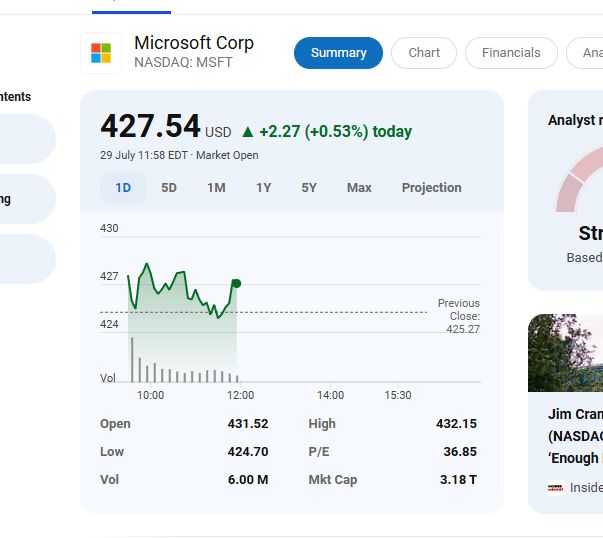
奥本 AI 将所有的最新 AI 聚合到了一起,为您开启多模型 AI 绘画新时代!
扫码即刻关注公众号
Ollama 最新更新:工具使用
6 个月前

AI生成的图片(Dalle-3)
Ollama的最新更新:工具使用
在Ollama的最新更新中,我们引入了工具使用功能,这将极大地扩展Ollama的能力,使其能够处理更复杂的任务和挑战。以下是更新的主要内容:
1. 工具使用概述
工具使用是指Ollama能够识别、选择和使用各种工具来完成特定任务。这包括但不限于:
- 选择正确的工具来解决问题
- 根据任务需求调整工具的使用方式
- 学习如何更有效地使用工具
2. 工具识别
Ollama现在能够识别各种工具,包括:
- 手动工具(如锤子、螺丝刀等)
- 电动工具(如电钻、砂轮机等)
- 数字工具(如软件、应用程序等)
3. 工具选择
根据任务的具体需求,Ollama能够选择最合适的工具来完成任务。这包括:
- 评估任务的复杂性和所需的技能水平
- 考虑工具的可用性和成本效益
- 选择最适合任务的工具
4. 工具使用技巧
Ollama已经学习了如何更有效地使用工具,包括:
- 学习正确的工具握持和操作方法
你需要了解的关于Ollama中函数调用的所有事情
在Ollama编程语言中,函数调用是执行程序中一个重要部分。以下是一些关键点,帮助你理解Ollama中的函数调用:
1. 函数定义
首先,你需要定义一个函数。在Ollama中,你可以使用fn关键字来定义一个函数。例如:
ollama
fn add(a, b) {
return a + b;
}
2. 函数调用
一旦你定义了一个函数,你可以在程序的任何地方调用它。调用函数时,你需要使用函数名后跟一对圆括号,括号内包含参数列表。例如:
ollama
result = add(3, 4);
3. 参数和返回值
函数可以有零个或多个参数,并且可以返回一个值。在上面的例子中,add函数有两个参数a和b,并且返回它们的和。
4. 作用域
函数有自己的局部作用域。这意味着在函数内部定义的变量在函数外部是不可见的。
5. 递
就在几天前,Ollama加入了大多数大型语言模型(LLM)开发者的行列,宣布Ollama内部直接提供了工具调用的使用。 尽管Ollama并不是一个LLM(大型语言模型)的开发者,更像是LLM的使能者,但这个消息对于它的粉丝来说仍然是个好消息。 在这篇文章中,我将向您展示如何使用Ollama的API和Python来使用工具。 如果你之前没有听说过Ollama,我建议你阅读下面的文章,在那里我介绍了他们以及他们的工作。 [Ollama 介绍 — 第一部分]
在本地运行LLM的Ollama使用指南
Ollama是一个轻量级的、高性能的LLM(Large Language Models,大型语言模型)运行环境,它允许用户在本地计算机上运行大型语言模型,而无需依赖于远程服务器或云服务。以下是使用Ollama在本地运行LLM的步骤:
-
安装Ollama: 首先,您需要在您的计算机上安装Ollama。您可以从Ollama的官方网站下载安装包,并按照安装指南进行安装。
-
选择LLM模型: 选择一个适合您需求的大型语言模型。Ollama支持多种模型,包括但不限于GPT、BERT等。
-
下载模型文件: 从模型提供者的网站下载所需的LLM模型文件。这些文件通常很大,可能需要一些时间来下载。
-
配置Ollama: 在Ollama中配置模型文件的路径,以及其他必要的设置,如内存分配、处理器使用等。
-
运行LLM模型: 使用Ollama提供的命令行界面或图形用户界面启动LLM模型。您可以输入文本或指令,模型将根据输入生成响应。
https://levelup.gitconnected.com/introduction-to-ollama-part-1-1156f9563b8d)搭建开发环境 在开始编码之前,最佳实践是设置一个新的开发环境以保持我们的项目隔离。我使用conda来实现这一点,但您可以使用您熟悉的任何工具。 ``` PS C:Users homa> conda create -n ollama_tools python=3.11 -y PS C:Users homa> conda activate ollama_tools (ollama_tools) PS C:Users homa> pip install jupyter yfinance ollama
```
安装Ollama 导航到
下载适用于您系统的Ollama最新版本,然后进行安装。
检查您的版本。您至少需要0.3.0才能使用工具调用。
(ollama_tools) PS C:Users homa> ollama --version
ollama version is 0.3.0
选择您的LLM模型并通过Ollama下载(拉取)它 对于Ollama中允许使用工具的兼容模型列表,请查看他们网站的这个部分, [Ollama]
快速开始使用大型语言模型。
https://ollama.com/search?c=tools)一旦你决定使用哪种模型,使用Ollama将其(下载)到你的本地系统。例如,我选择使用Llama 3.1 8B模型。
(ollama_tools) PS C:Users homa> ollama pull llama3.1
第一次这样做可能需要一两分钟。你可以通过以下方式检查你的本地系统上有哪些模型:
(ollama_tools) PS C:Users homa> ollama list
要运行一个模型,这是在与之交互之前需要做的,使用例如 run 命令。
(ollama_tools) PS C:Users homa> ollam run llama3.1:latest --keepalive 120m
一旦你到达 >>> 提示符,你可以直接退出,模型将在后台继续运行,在这种情况下,将持续运行120分钟,然后自动卸载。
为什么我们需要使用工具?
我们需要使用工具的原因是,大型语言模型(LLMs)通常在其知识库中有一个截止日期。这意味着它们不了解当前事件、情况等……除非它们能够直接访问互联网,但大多数模型都不能。 所以,如果你问一个大型语言模型(LLM)当前爱丁堡的温度,它无法告诉你。同样的情况也适用于询问特定股票的当前价格等事情。 ```
what is the current price of MSFT (Microsoft)
As I'm a large language model, I don't have direct access to real-time market data. However, I can suggest some ways for you to find out the current stock price of Microsoft (MSFT):
- Financial websites: Visit reputable financial websites like: * Yahoo Finance (finance.yahoo.com) * Google Finance (finance.google.com) * Bloomberg (bloomberg.com) * CNBC (cnbc.com)
- Stock market apps: Use a mobile app like: * Robinhood * Fidelity Investments * eTrade * TradingView
- Direct from the source: Visit Microsoft's investor relations page (ir.microsoft.com) for real-time stock data.
As of my knowledge cutoff, the current price of MSFT was around $245-$250 per share. However, please note that this information may be outdated, and I recommend checking a reliable financial website or app for the most recent and accurate price.
If you want to get an estimate, here are some historical price ranges:
- 52-week high: around $280
- 52-week low: around $210
Keep in mind that stock prices can fluctuate rapidly due to various market factors. Always consult multiple sources or a financial advisor for more precise and up-to-date information. ```
```markdown
Example Code: Find the Current Price of a Stock
To find the current price of a stock, you can use various financial APIs or libraries. Here's an example using the yfinance library in Python to fetch the current price of a stock.
Prerequisites
- Install
yfinancelibrary if you haven't already:bash pip install yfinance
Python Code
```python import yfinance as yf
def get_current_stock_price(stock_symbol): """ This function fetches the current price of a given stock symbol.
:param stock_symbol: str - The stock symbol to fetch the price for.
:return: float - The current price of the stock.
"""
# Fetch the stock data
stock_data = yf.Ticker(stock_symbol)
# Get the current price
current_price = stock_data.info['regularMarketPrice']
return current_price
Example usage:
if name == "main": stock_symbol = "AAPL" # Apple Inc. price = get_current_stock_price(stock_symbol) print(f"The current price of {stock_symbol} is: ${price}") ``` This code snippet
让我们来解决这个问题。 那么,为了回答我们的问题,我们首先需要一个函数来返回股票的当前价格。我们可以使用雅虎财经来实现这一点。 ``` import yfinance as yf
def get_current_stock_price(ticker_symbol):
# Get the stock data stock = yf.Ticker(ticker_symbol)
# Get the current price current_price = stock.history(period='1d')['Close'].iloc[0]
return current_price ```
现在,请指定工具(功能)给Ollama。 ``` import ollama
Want the current price of Microsoft - ticker symbol MSFT
response = ollama.chat( model='llama3.1', messages=[{'role': 'user','content': 'What is the current price of MSFT'}],
# provide a tool to get the current price of a stock tools=[{ 'type': 'function', 'function': { 'name': 'get_current_stock_price', 'description': 'Get the current price for a stock', 'parameters': { 'type': 'object', 'properties': { 'ticker_symbol': { 'type': 'string', 'description': 'The ticker symbol of the stock', }, }, 'required': ['ticker_symbol'], }, }, }, ], )
print(response['message']['tool_calls']) ```
动态调用工具。 ```
Create a dictionary mapping function names to functions
function_map = { 'get_current_stock_price': get_current_stock_price, # Add more functions here as needed }
def call_function_safely(response, function_map): # Extract the function name and arguments from the response tool_call = response['message']['tool_calls'][0] function_name = tool_call['function']['name'] arguments = tool_call['function']['arguments']
# Look up the function in the function map
function_to_call = function_map.get(function_name)
if function_to_call:
try:
# Call the function with the arguments
result = function_to_call(**arguments)
print(f"The current price of {arguments['ticker_symbol']} is : {result}")
except TypeError as e:
print(f"Argument error: {e}")
else:
print(f"{function_name} is not a recognized function")
call_function_safely(response, function_map) ```
这产生了以下输出,
The current price of MSFT is : 427.4599914550781
看起来对我来说已经足够接近了,

图片来自必应
*好的,这就是我现在所有的内容。希望你觉得这篇文章有用。如果你觉得有用,请查看我的个人资料页面在
从那里,你可以看到我其他发表的故事,并订阅以获取我发布新内容时的通知。* 如果您喜欢这篇文章,我认为您也会对以下文章感兴趣。 [Python的并行范式转变]
探索无GIL Python的性能潜力
在Python编程语言中,全局解释器锁(GIL)是一个长期存在的问题,它限制了多线程程序的性能,因为GIL确保了同一时刻只有一个线程可以执行Python字节码。然而,Python社区一直在探索GIL-free(无GIL)的实现,以期提高并行计算的性能。
1. GIL的背景和问题
GIL是Python解释器的一个关键组件,它允许CPython(Python的标准实现)在多线程环境中安全地执行。但是,GIL也带来了一些性能瓶颈,尤其是在CPU密集型任务中。当多个线程尝试同时执行时,GIL会导致线程争用和上下文切换,从而降低程序的整体性能。
2. 无GIL的Python实现
为了克服GIL的限制,一些Python实现,如Jython和IronPython,已经采用了无GIL的设计。此外,CPython的一些分支,例如PyPy,也在尝试实现无GIL的版本。这些实现通过不同的内存管理和线程调度策略来提高并行性。
3. 性能提升的潜力
无GIL的Python实现可以显著提高多线程程序的性能。在某些 Towards Data Science
https://towardsdatascience.com/pythons-parallel-paradigm-shift-2bb40d3c2dd0)[PySpark 详解:用户定义函数]
它们是什么,以及如何使用它们?
https://towardsdatascience.com/pyspark-explained-user-defined-functions-40a71f924b1a)
赋迪奥本AI
上海赋迪网络科技
电话:18116340052

 沪公网安备31011802004973
沪公网安备31011802004973